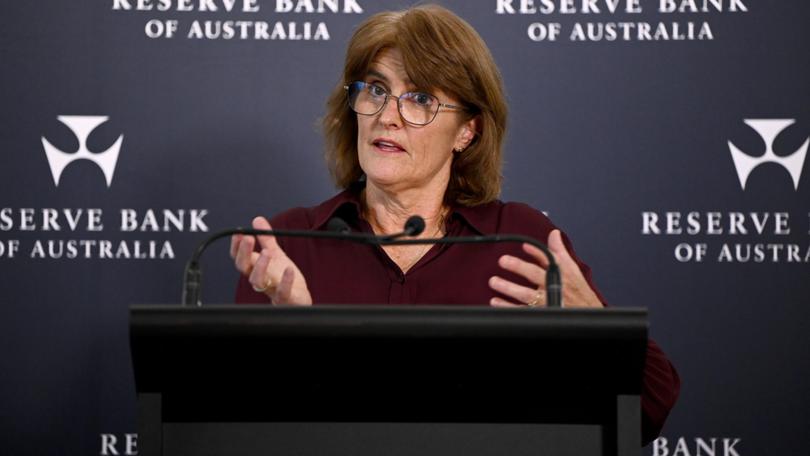RBA interest rates: Central bank stays on hold at 4.35pc in May to assess economic outlook

Reserve Bank of Australia governor Michele Bullock says interest rates staying on hold is appropriate for now but has reiterated warnings rate hikes may still be needed to push inflation lower.
The RBA on Tuesday kept rates on hold at 4.35 per cent, where they have been since November last year, citing the need to keep monitoring the economy. Inflation has turned up higher so far this year than expected, at 3.6 per cent.
Ms Bullock, addressing reporters after the RBA board’s decision, also revealed she herself had been surprised by the sting of higher prices.
Sign up to The Nightly's newsletters.
Get the first look at the digital newspaper, curated daily stories and breaking headlines delivered to your inbox.
By continuing you agree to our Terms and Privacy Policy.“I went to fill up my car with petrol the other day and I got an absolute shock when I saw the price of it,” she said.
The RBA has pushed up its expectations for near-term inflation, to be 3.8 per cent in the June quarter — just three months ago, it expected 3.3 per cent at the same time.
“We don’t think we necessarily have to tighten (rates) again — but we can’t rule it out. If we have to, we will,” Ms Bullock said, emphasising the path back to the RBA’s target of 2 to 3 per cent inflation was likely to be “bumpy” and people needed to be prepared for that.
The main concern to the inflation outlook is ongoing price strength in services, particularly notable in sectors such as insurance, education and health. Insurance in the year to March rose at its fastest level in two decades.
Ms Bullock said she understood a growing tranche of people were struggling with higher costs and prices, but interest rates were not the only cause. Inflation was an overarching reason.
“What I can do for them is get the inflation level down so they don’t have to worry about prices,” she said.
“That is the best thing I can do for them.”
In its post-meeting statement, the RBA board said excess demand in the economy was continuing, alongside strong cost pressures in Australia.
“The economic outlook remains uncertain and recent data have demonstrated that the process of returning inflation to target is unlikely to be smooth,” it said.
“The persistence of services inflation is a key uncertainty. It is expected to ease more slowly than previously forecast, reflecting stronger labour market conditions including a more gradual increase in the unemployment rate and the broader underutilisation rate.”
The RBA is also concerned at how price-setting and wage decisions by companies will respond to the slowing economy while the labour market remains tight.
“While inflation is easing, it is doing so more slowly than previously expected and it remains high,” the board said in its statement.
“The board expects that it will be some time yet before inflation is sustainably in the target range and will remain vigilant to upside risks.”
Deloitte Access Economics partner Stephen Smith said he still expected inflation to decelerate faster than the RBA expected, with rate cuts to come in September.
“The fact that the RBA kept interest rates on hold after a stronger-than-expected CPI print for the March quarter may indicate that the central bank acknowledges that interest rates cannot easily tame supply-driven inflation,” he said.
Many economists are still holding to expectations of a November rate cut, but EY chief economist Cherelle Murphy noted the RBA’s resolve was being tested by recent developments, including the higher than expected inflation data for the march quarter.
“Our central expectation remains that the Reserve Bank will be willing to hold the cash rate at 4.35 per cent for some time. We have cautioned that rate cuts are likely a distant reality,” she said.
